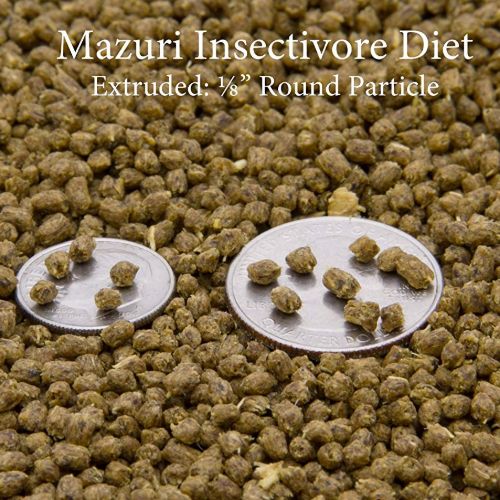In the intricate tapestry of our ecosystems, the insectivore diet plays a vital role, serving as both a mechanism for pest control and a testament to nature’s extraordinary adaptability. Insectivores, or animals that subsist predominantly on insects, fulfill many ecological functions, balancing populations of pests, pollinators, and other insects that play crucial roles in our environment.
The insectivore diet spans an impressive array of taxa, with its adherents found among mammals, birds, reptiles, and even some amphibians. This dietary stratification significantly enhances biodiversity, as these creatures exploit a specific niche, contributing to the health of their ecosystems. Let us embark on a journey through the fascinating world of insectivores to examine their diverse characteristics, roles, and the myriad benefits they provide.
1. Understanding the Insectivore Diet
At its most fundamental level, the insectivore diet consists of various insects, including beetles, ants, termites, and caterpillars. Adaptations for consuming insects are remarkable. Many insectivorous animals possess specialized anatomical features, such as elongated snouts, sticky tongues, or sharp beaks, allowing them to effectively capture and consume their prey.
This diet is primarily advantageous due to the high protein content of insects, making them an excellent energy source. Additionally, insects are abundant, with billions of individuals coexisting in various habitats, ensuring a relatively stable food supply for insectivorous species. However, the insectivore diet goes beyond mere subsistence; it shapers the ecological balance and the dynamic interplay of life.
2. Types of Insectivorous Animals
Insectivores can be classified into several categories, each showcasing unique adaptations and behaviors. Among the most recognizable are:
2.1 Mammals
Mammals such as bats, shrews, and anteaters are quintessential insectivores. Bats, for instance, play a significant role in controlling insect populations and are capable of consuming thousands of insects in a single night. Their echolocation abilities enable them to navigate and hunt in the dark, making them highly effective predators. Shrews, on the other hand, have an impressive metabolism, necessitating constant foraging for insects to sustain their energy levels.
2.2 Birds
Many birds are well known for their insectivorous habits, with species like swallows, warblers, and woodpeckers exhibiting remarkable foraging strategies. For example, the European nightjar showcases stealth while hunting, adeptly camouflaged against tree bark. The vibrant hummingbirds, though commonly associated with nectar, will also consume small insects and spiders, showcasing their varied dietary preferences.
2.3 Reptiles and Amphibians
Reptiles such as chameleons and certain lizards are often on the prowl for insects. Their unique hunting techniques—like rapid tongue extension in chameleons—demonstrate the diverse adaptations across species. Amphibians like frogs also belong to the insectivore group, employing a visually driven strategy to capture insects with their sticky tongues.
3. Ecological Importance of Insectivores
The ecological significance of insectivores cannot be overstated. As natural pest controllers, these animals help maintain healthy populations of insects that might otherwise proliferate uncontrolled, leading to imbalances in ecosystems. For instance, consider the impact of bats in reducing agricultural pests. They consume vast quantities of insects, which in turn aids farmers in decreasing their reliance on chemical pesticides, promoting organic farming practices.
Furthermore, insectivores contribute to pollination and seed dispersion, often inadvertently aiding the reproduction of various plant species. The link between insectivores and floral ecosystems exemplifies a complex web of interdependence, underscoring the need for preserving their habitats.
4. Challenges Facing Insectivore Populations
Despite their ecological importance, insectivores face numerous challenges that threaten their populations. Habitat loss, predominantly driven by urbanization, agricultural expansion, and deforestation, reduces their food sources and breeding grounds. Climate change, too, is exerting pressure on insect communities and altering the availability of insects—compounding the challenges for animals reliant on these food sources.
Invasive species represent another threat, often outcompeting local insectivores or preying on their young. Conservation efforts are crucial to reversing these declines, as preserving insectivore habitats ensures not only the survival of these species but the health of ecosystems at large.
5. Conclusion: Celebrating Nature’s Pest Controllers
Insectivores embody a unique segment of biodiversity, fulfilling essential roles within ecosystems as both predators and contributors to ecological balance. From small shrews darting through underbrush to majestic bats soaring against the twilight sky, these creatures are indispensable allies in our natural world. Understanding their dietary habits and ecological roles encourages a profound appreciation for their existence while prompting action to protect them from the myriad threats they face.
By celebrating and protecting insectivores, we safeguard our ecosystems and inspire future generations to cherish the intricate connections that sustain life on our planet. As stewards of nature, it is our responsibility to ensure these remarkable animals continue to flourish for a balanced and thriving environment.
